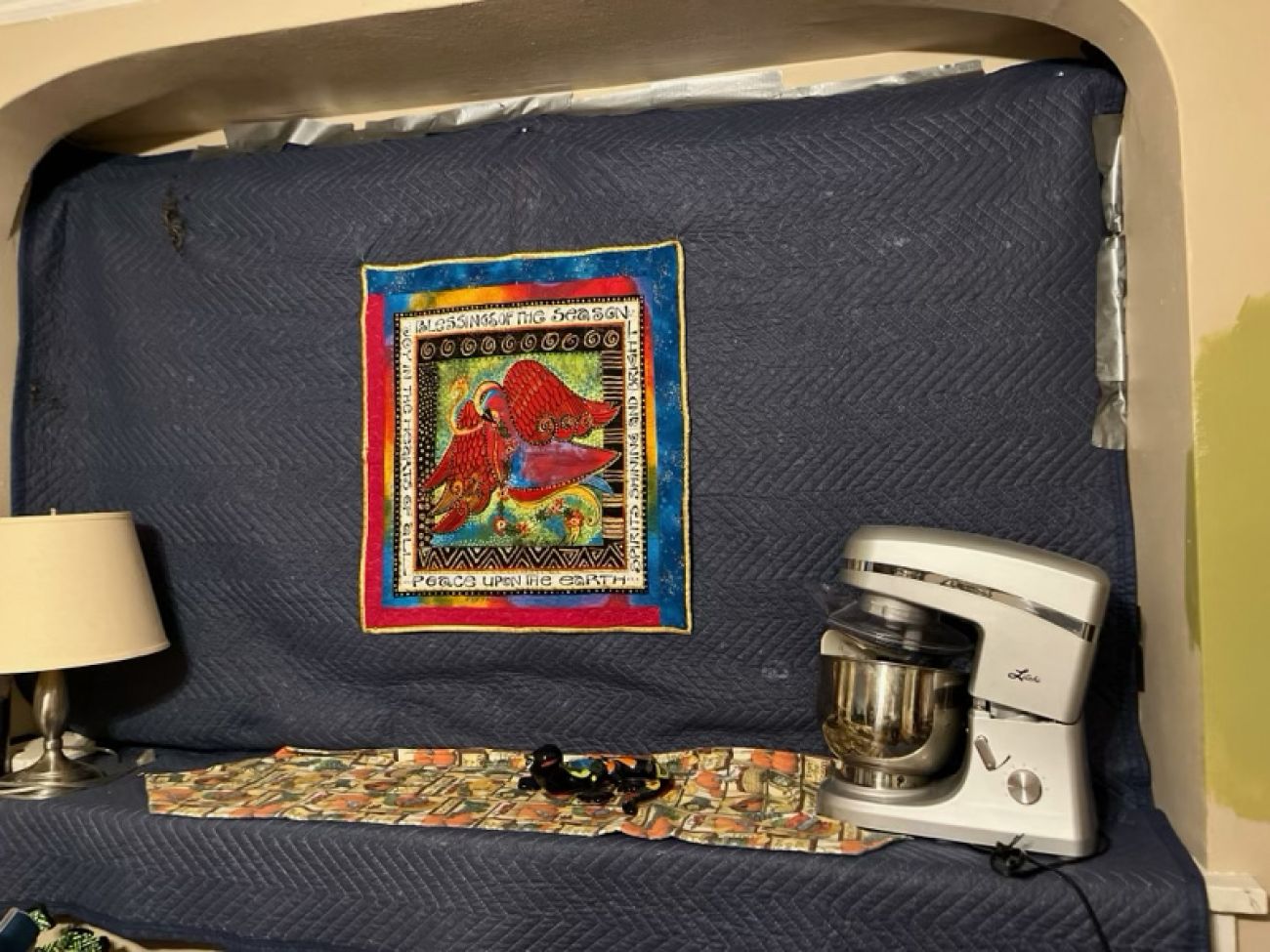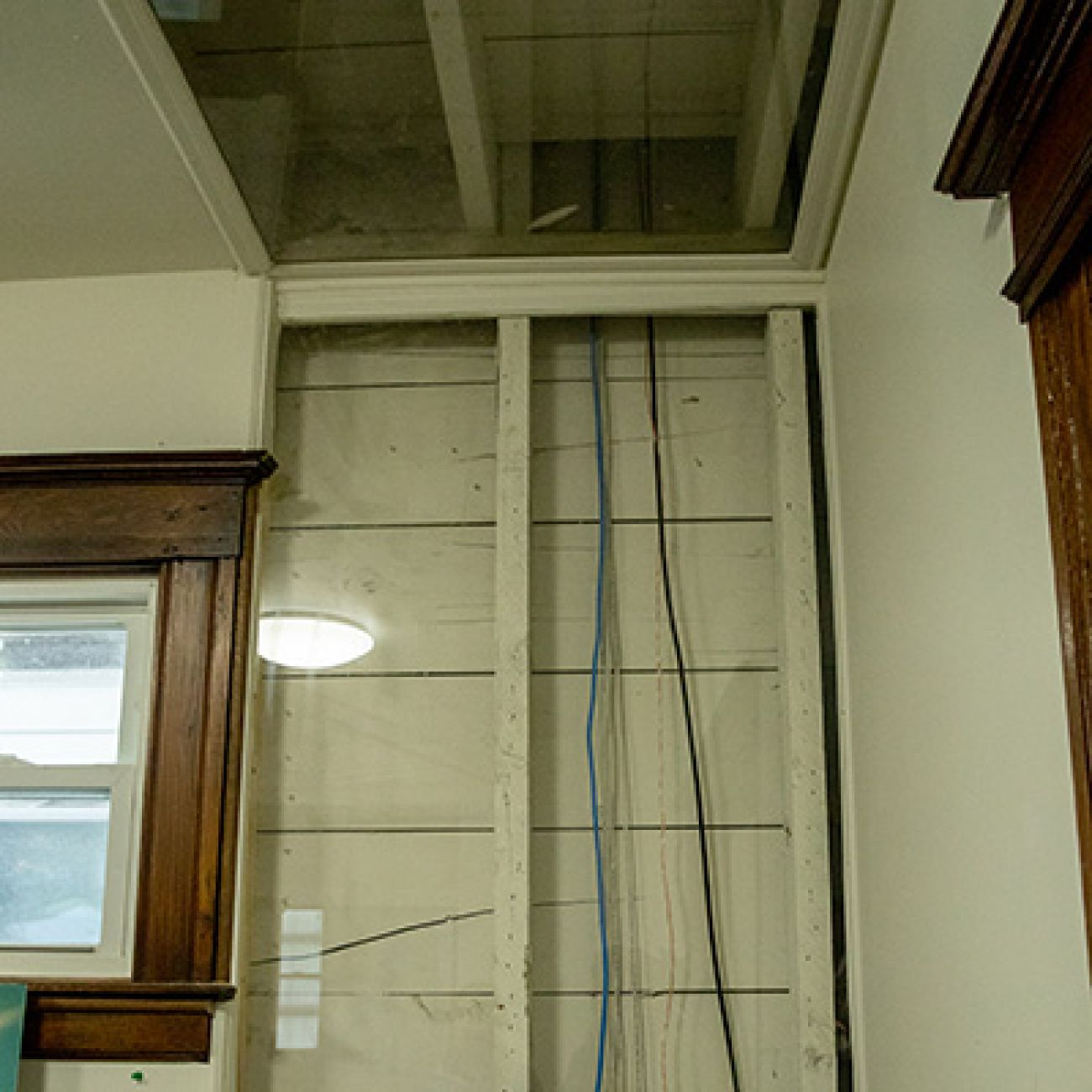Michigan plans big spending to insulate homes. But can it find contractors?

- Making homes more energy efficient is an unsung piece of the climate puzzle that reduces emissions and utility bills
- Michigan just received a multi-hundred-million funding boost for such efforts in a state with large volumes of older homes
- But first, it must find more workers to install insulation and upgrade windows
As a retiree who struggles each winter to cover the cost of heating her poorly-insulated Grand Rapids home, Michael Wright is the ideal candidate for a state home weatherization program that is flush with cash.
The 67-year-old checks all the boxes to qualify for the Weatherization Assistance Program, a federally-funded effort to help low-income Michiganders get weather stripping, insulation and other retrofits that make homes more energy-efficient.

The program benefits participants and the public, lowering heat and electricity bills while helping Michigan achieve climate action goals that rely, in no small part, on driving down energy consumption.
“I'm all about the planet,” said Wright, who line-dries her clothes, composts and grows her own vegetables. “Me having to use all this power is just obscene, when it could be fixed.”
Related:
- Michigan lawmakers have more energy priorities in 2024
- Whitmer signs energy bills to make Michigan use clean energy by 2040
- Michigan has a new way to fight climate change: Energy from cow poop and urine
Yet a year after applying for help through her local community action agency, Wright is losing hope. A shortage of contractors has created a backlog of homes awaiting work, which means Wright is suffering through another winter with heating bills between $200 and $400 a month.
Amid a nationwide effort to wean society off fossil fuels while lowering energy costs, Michigan has received a multi-hundred-million-dollar boost in funding to equip homes with energy-saving retrofits. The state hopes to reduce emissions related to heating homes and businesses by 17% within the next six years.
Yet worker shortages and bureaucratic red tape are complicating the effort.
Deploying federal funds quickly will require hundreds more weatherization workers. But employers report hiring difficulties, while local nonprofits tasked with spending weatherization dollars struggle to compete for contractors who can often find easier, more lucrative work on the private construction market.

‘Critical tool’ in the energy transition'
There’s an adage in environmental circles that the cleanest, cheapest energy is the energy you don’t use.
Anyone who pays a heating bill knows that a drafty house is bad for the pocketbook. It’s also bad for the planet, forcing utilities to burn fossil fuels for energy that goes to waste.
And with some of the nation’s oldest housing stock (the average Michigan home is 52 years old, compared to a national average of 45), Michigan has plenty of poorly-insulated homes. That makes reducing energy waste a win-win climate solution.
“It’s a critical tool in reaching decarbonization goals,” said Maddie Wazowicz, policy director with the Midwest Energy Efficiency Alliance, and “one of the only things a consumer can do to take charge of their energy bills.”
Since the 1970s, Michigan and other states have operated federally-funded programs to help low-income homeowners make energy retrofits. But the money has never gone far, allowing for improvements at some 8 million homes nationwide, while more than 35 million other homes qualify for assistance.
That’s changing this year, after the federal Bipartisan Infrastructure Law, passed in 2021, boosted weatherization funding nationwide by $3.16 billion. The Michigan Department of Health and Human Services received an extra $183 million to be spent over the next several years, more than doubling the program’s typical budget.
Kris Schoenow, executive director for the Bureau of Community Action and Economic Opportunity within MDHHS, said it’s enough to weatherize about 3,000 homes annually over the next several years. That’s up from about 1,200 annually in recent years.
And that’s just part of the home energy-efficiency windfall.
The 2022 Inflation Reduction Act included $8.8 billion nationally ($211 million for Michigan) to offer rebates for insulation, heat pumps and other purchases that shrink homes’ energy footprint. The state could begin distributing those funds this fall.
And Michigan’s newly-passed clean energy package requires utilities like Consumers Energy and DTE Energy to rein in more energy waste through efforts such as helping customers buy energy-efficient appliances or make home insulation upgrades.
All together, “it's probably the biggest amount of money we’ve seen to rehab home energy systems in decades,” said Charlotte Jameson, chief policy office with the Michigan Environmental Council.
And it comes at a crucial time: The International Energy Agency last year warned that the world needs to double the pace at which it’s boosting energy efficiency to meet global climate goals. Meanwhile, Gov. Gretchen Whitmer’s 2022 climate action plan calls for a 17% reduction in home and business heating emissions by 2030.
But achieving those goals will require more than just money.
High demand, low staffing
Much of the work to retrofit Michigan homes will be carried out by community action agencies, regional anti-poverty nonprofits scattered across the state.
Mia Harnos, chief operating officer of Wayne Metropolitan Community Action Agency, is hoping to boost weatherization within her region from 551 homes last year to an average of 1,250 annually between now and 2027.
In Grand Rapids, Kent County Community Action Executive Director Gustavo Perez hopes to go from about 60 homes annually to at least 120.
That is, if the groups can find enough home energy auditors and contractors willing to take on small, often-complicated jobs that typically involve upgrading insulation, sealing leaks and installing windows on older homes.
“The reality is, we don’t have enough staffing to keep up with the demand,” Perez said.
It’s a challenge shared by community action agencies throughout Michigan and across the nation, said Brian McGrain, executive director of Michigan Community Action, the statewide association of local community action agencies.
Approximately 84% of energy efficiency employers reported difficulty finding qualified workers in 2022, according to an annual report by E4TheFuture, a nonprofit that works to improve residential energy efficiency.
In the face of those challenges, the state of Michigan and local agencies are looking to boost recruitment. They’ve hosted job fairs for contractors. They’ve personally appealed to people in their social networks. The Wayne Metro Community Action Agency, which serves Wayne County, created a home weatherization demonstration house in Highland Park, and started its own training programs.

“We've been investing a lot in workforce development,” Harnos said. “Every time we train someone and get them certified, that's more homes we can go into.”
But staffing up can be a slow process: It takes up to seven months to get certified as a home energy auditor, including a written exam and 1,000 hours of experience in the field, said John Carmody, who leads Wayne Metro’s weatherization trainings.
“To get people in, it’s a lot of work,” Carmody said, and though trainees are paid for their time, many don’t finish the course.
Combined, Wayne Metro’s two training programs, which prepare workers to perform home energy audits and weatherization, had 22 graduates last year. Those that make it through can expect pay of at least $60,000 annually.
“It's a great opportunity to gain skills, help others, and to be able to take care of your family,” said Darryl Oliver, who weatherizes homes for Wayne Metro.
Oliver said he suspects the worker shortage stems from a lack of public awareness that jobs are available. Hoping to raise awareness, Schoenow said the state will soon launch a marketing campaign focused partly on recruiting weatherization contractors. Most employers require either a high school diploma or GED, but there are ways for people with less education to get training and job opportunities through community action agencies.
But Perez, of Kent Community Action, said groups like his are struggling to win workers in a competitive construction labor market.
Simply put, he said, “contractors are busy with bigger jobs that pay a lot more.”
Under federal policy, each pot of federal weatherization funds is limited to an average cost-per-home of just over $8,000. That would have been a tight budget even before the pandemic, and construction costs have risen sharply since then. Replacing windows throughout a home, for instance, can be upwards of $10,000.
“There was probably wisdom in putting a cap on, understanding that these were limited resources,” said McGrain. But “it needs to be raised.”
McGrain said advocates have unsuccessfully lobbied the federal government to increase the cap.
Navigating a complicated maze of programs
The recruitment problem is one of several challenges as Michigan strives to make homes more energy-efficient.
Another is the poor condition of Michigan’s older housing stock.
Energy auditors working through the Weatherization Assistance Program are sometimes forced to turn down otherwise-eligible residents because their home needs basic repairs and upgrades before it can qualify for funds.
A leaky roof can be a disqualifier, as can old knob and tube electrical wiring. Wayne Metro said it turns down three out of four homes because of such issues.
Sometimes separate pools of money are available for that work, but piecing it all together may require a homeowner to work with multiple agencies and contractors — a process that can get “super complicated,” said Tony Reames, an associate professor of environment and sustainability at the University of Michigan who has studied the challenges facing state weatherization programs.
Reames said Michigan can circumvent that problem by better coordinating those various funding pools, so residents and contractors can access them all with one application.
Doing so may also help community action agencies to lure contractors with more lucrative contracts.
“It's easier to get those bigger projects picked up by contractors,” said Grace Michienzi, Director of Policy for the Michigan Energy Innovation Business Council, “which also kind of pulls in that workforce development issue.”
Michigan Environment Watch
Michigan Environment Watch examines how public policy, industry, and other factors interact with the state’s trove of natural resources.
- See full coverage
- Subscribe
- Share tips and questions with Bridge environment reporter Kelly House
Michigan Environment Watch is made possible by generous financial support from:
Our generous Environment Watch underwriters encourage Bridge Michigan readers to also support civic journalism by becoming Bridge members. Please consider joining today.
See what new members are saying about why they donated to Bridge Michigan:
- “In order for this information to be accurate and unbiased it must be underwritten by its readers, not by special interests.” - Larry S.
- “Not many other media sources report on the topics Bridge does.” - Susan B.
- “Your journalism is outstanding and rare these days.” - Mark S.
If you want to ensure the future of nonpartisan, nonprofit Michigan journalism, please become a member today. You, too, will be asked why you donated and maybe we'll feature your quote next time!






